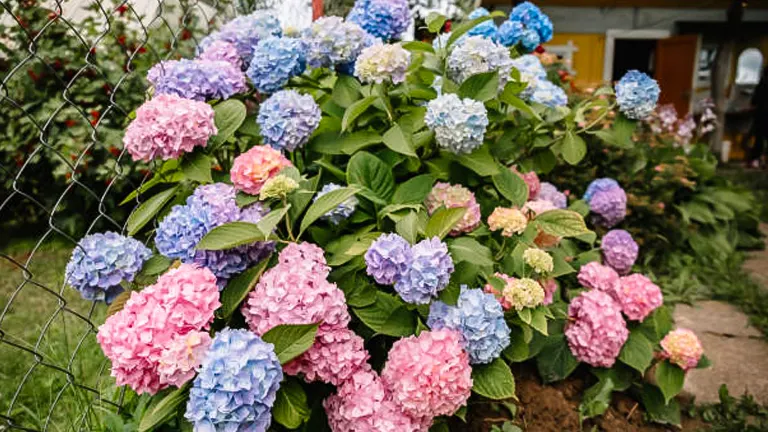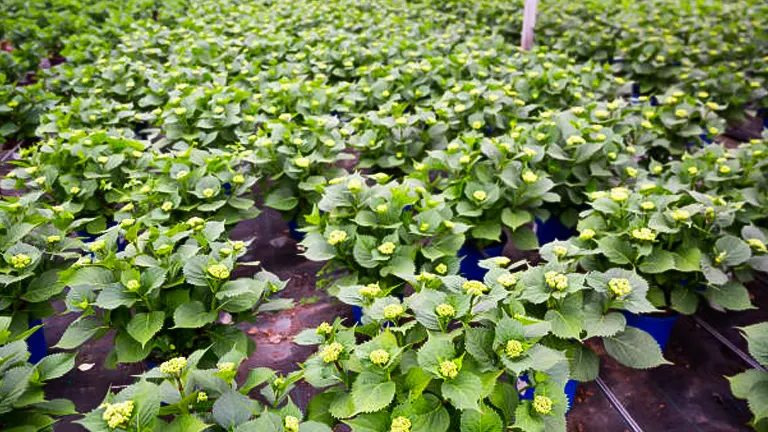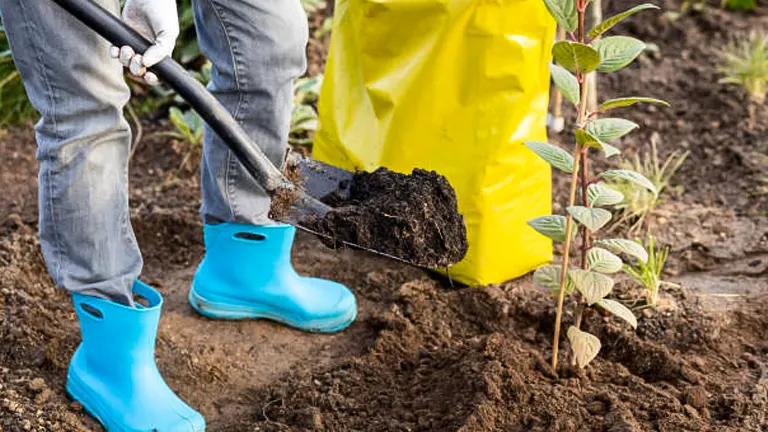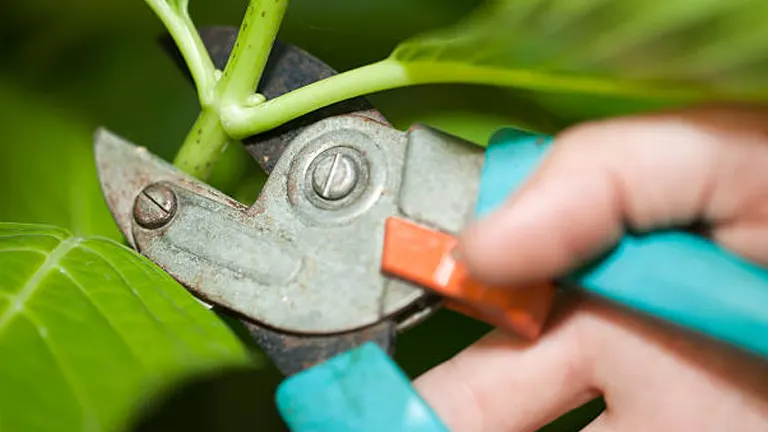How to Fertilize Hydrangeas for Dazzling Blooms: Your Guide to Garden Success
- April 8, 2024
- 0 comment
Discover how to fertilize hydrangeas for vibrant blooms and lush growth. Unlock your garden’s full potential with our expert tips and tricks. Hydrangeas, known for their lavish blooms and captivating colors, stand as a testament to the beauty of ornamental gardening.

Achieving those envy-inducing, voluminous flowers goes beyond simple planting; it demands a strategic approach to fertilization, tailored specifically to these plants’ needs. In this comprehensive guide, we will explore the art and science behind nurturing your hydrangeas.
Table of Contents
- Understanding Hydrangeas
- The Basics of Fertilizing Hydrangeas
- When to Fertilize Hydrangeas
- How to Fertilize Hydrangeas
- Common Fertilizing Mistakes and How to Avoid Them
- Advanced Tips for Hydrangea Care
- Conclusion
- FAQs
Understanding Hydrangeas
Understanding Hydrangeas

Hydrangeas are not just popular for their aesthetic appeal; they are botanically fascinating, exhibiting a range of responses to environmental conditions. Here’s a closer look at their types, care needs, and the scientific principles that govern their growth and coloration.
Overview of Hydrangea Types and Their Specific Needs
Hydrangeas are classified into several types, each with distinct characteristics and requirements:
- Mophead (Hydrangea macrophylla): Known for their large, round flower heads, these are among the most popular hydrangeas. They thrive in rich, moist soil and require moderate sun and shade.
- Lacecap (Hydrangea macrophylla): Featuring flat flower heads with a center core of subdued, fertile flowers surrounded by outer rings of showy, sterile flowers, they share similar soil and light preferences with mophead varieties.
- Panicle (Hydrangea paniculata): Distinguished by their cone-shaped flower clusters, they are more sun-tolerant and can thrive in a variety of soil types.
- Oakleaf (Hydrangea quercifolia): Recognized by their oak-shaped leaves and elongated flower clusters, these hydrangeas are valued for their foliage as much as for their blooms. They enjoy partial shade and well-drained soil.
Each type requires specific fertilization strategies to optimize growth and bloom quality, adjusting for soil type, light exposure, and water needs.
The Role of Soil Conditions and pH
The color variation in hydrangea flowers, particularly in the mophead and lacecap varieties, is a direct result of the soil’s pH level. Soil pH influences the availability of aluminum ions, which are pivotal in color alteration. Acidic soils (pH < 6) allow hydrangeas to absorb aluminum, leading to blue flowers. Conversely, alkaline soils (pH > 7) hinder aluminum absorption, resulting in pink flowers.
| Soil pH Range | Available Aluminum | Resulting Flower Color |
|---|---|---|
| < 6 | High | Blue |
| 6 – 7 | Moderate | Purple to Pink |
| > 7 | Low | Pink |
Adjusting soil pH is a process that can take several months and requires retesting and adjustments to maintain the desired color.
Importance of Proper Hydration and Sunlight
Hydrangeas’ water and sunlight requirements are closely linked to their physiological stress responses. These plants possess a high transpiration rate, meaning they lose water rapidly through their leaves, especially in hot or windy conditions. This makes consistent moisture crucial to avoid stress, which can lead to drooping leaves and diminished bloom quality.
While hydrangeas generally prefer morning sun and afternoon shade, the degree of sun tolerance can vary significantly among types. Panicle hydrangeas, for instance, are more sun-loving and can tolerate and even thrive in more extended periods of sunlight, provided they receive adequate water.
Hydrangeas utilize sunlight not just for photosynthesis but also for regulating internal water balance and initiating bloom development. The right balance of light is essential for stimulating flower bud formation while preventing excessive water loss.
The Basics of Fertilizing Hydrangeas
The Crucial Role of Fertilization in Hydrangea Health

Adequate fertilization enhances a plant’s resilience against biotic and abiotic stress factors such as pests, diseases, and fluctuating weather conditions. By supplying essential nutrients, fertilization supports the plant’s physiological and biochemical processes, facilitating not only growth but also the plant’s ability to produce high-quality blooms and maintain soil health.
Comprehensive Analysis of Fertilizer Types
The choice between organic and chemical (synthetic) fertilizers significantly impacts soil health and plant development over time. Here’s a closer look:
- Organic Fertilizers: Derived from natural sources, these fertilizers release nutrients slowly as they break down in the soil, enhancing microbial activity and improving soil structure. They contribute to long-term soil health and fertility but require time to show results.
- Chemical Fertilizers: Provide quick nutrient availability, offering an immediate impact on plant growth. They are precisely formulated for balanced nutrition but can lead to salt accumulation and potentially harm beneficial soil microorganisms if used excessively.
- Slow-Release Fertilizers: These are often encapsulated in a shell that dissolves over time, providing a consistent nutrient supply. This method minimizes the risk of nutrient leaching and reduces the frequency of application.
- Liquid Fertilizers: Ideal for addressing immediate nutritional deficiencies, liquid fertilizers are absorbed quickly by plant roots and leaves. They are perfect for a mid-season boost but require more frequent applications.
Deciphering N-P-K Ratios for Hydrangeas
Understanding the N-P-K ratio is essential for selecting the right fertilizer for your hydrangeas at various growth stages. Here’s what each component contributes:
| Element (N-P-K) | Role in Plant Health | Ideal Ratio for Hydrangeas |
|---|---|---|
| Nitrogen (N) | Promotes foliage growth | Lower in blooming season to discourage excessive green growth |
| Phosphorus (P) | Supports root and bloom development | Higher during the pre-blooming and blooming phases |
| Potassium (K) | Enhances overall plant health, disease resistance | Consistently needed throughout the growing season |
An optimal N-P-K ratio for hydrangeas generally skews lower in nitrogen, especially during the blooming season, to prevent lush foliage at the expense of blooms. A balanced 10-10-10 formula can serve as a good all-purpose fertilizer, but adjusting the ratios based on the plant’s lifecycle and observed needs can lead to better health and more vibrant blooms.
When to Fertilize Hydrangeas
Optimal Fertilization Timings

The timing of fertilizer application is pivotal to the health and bloom quality of hydrangeas. It’s anchored in the plant’s growth cycle and environmental cues.
- Early Spring (March to April): As hydrangeas wake from dormancy, their nutrient uptake increases. Applying a balanced, slow-release fertilizer during this period supports the initial surge of leaf and root development.
- Early Summer (June to July): This second application boosts energy for bud formation and bloom development. It’s essential for ensuring the plant has the resources needed for vibrant flowers.
Identifying the Need for Fertilization
Hydrangeas exhibit specific signs when they’re in need of nourishment:
- Yellowing Leaves: Often a sign of nitrogen deficiency, crucial for chlorophyll production and overall vigor.
- Sluggish Growth: Indicates a potential lack of essential nutrients.
- Diminished Blooming: Suggests the plant may not be receiving adequate phosphorus, vital for flower development.
Detailed Seasonal Fertilization Schedule
To simplify, here’s a structured approach to hydrangea fertilization across different seasons:
| Timeframe | Action | Reasoning |
|---|---|---|
| Early Spring | Apply balanced, slow-release fertilizer | Supports leaf and root growth as plants exit dormancy. |
| Early Summer | Second fertilizer application | Encourages robust bloom development. |
| Late Summer/Fall | Avoid fertilization | Prevents vulnerable new growth that could be damaged by winter conditions. |
Scientific Considerations
- N-P-K Ratios: A balanced fertilizer (e.g., 10-10-10) is generally recommended for the initial spring application to support all-around health. Adjusting the ratio to promote more phosphorus (e.g., 10-20-10) in early summer can further enhance bloom quality.
- Soil Testing: Conducting a soil test prior to the first application can provide insights into specific nutrient deficiencies and pH adjustments. Tailoring your approach based on these results can lead to more effective fertilization.
Additional Tips
- Water After Applying: Watering helps dissolve and distribute nutrients in the soil, making them more accessible to the plant’s root system.
- Monitor and Adjust: Be prepared to adjust your fertilization strategy based on the plant’s response and changing weather conditions.
How to Fertilize Hydrangeas
Detailed Step-by-Step Fertilization Process

1. Testing Soil pH and Nutrient Levels
- Why It’s Important: Understanding your soil’s current condition is crucial for effective fertilization. Hydrangeas’ color and health significantly depend on soil pH and nutrient availability.
- How to Do It: Use a soil test kit from your local garden center or send a sample to a laboratory for a more detailed analysis. Aim to test several spots around your hydrangeas for an accurate overall reading.
2. Choosing the Right Fertilizer
- Selection Criteria: Based on your soil test, select a fertilizer that complements your soil’s needs. While a balanced N-P-K ratio (10-10-10 or 20-20-20) suits general needs, your hydrangeas might benefit from a different ratio if specific nutrient deficiencies are identified.
- Organic Options: Consider organic fertilizers like compost, fish emulsion, or bone meal for gradual nutrient release and soil health improvement. These options are especially beneficial for long-term soil vitality.
3. Proper Application Techniques
- Method: Distribute the fertilizer evenly around the drip line of the plant—the area directly below the outermost reach of the branches—rather than near the stem. This encourages roots to grow outward for nutrient uptake.
- Timing: The best time for application is in the early morning or late afternoon to avoid rapid evaporation and to ensure that nutrients are well-absorbed.
- Watering: After applying fertilizer, water the area thoroughly. This helps dissolve the fertilizer and carry the nutrients down to the roots, while also preventing potential root burn.
Adjusting Soil pH for Color Control
Hydrangeas, especially the mophead and lacecap varieties, are known for their color-changing abilities based on soil pH:
- For Blue Blooms: To lower soil pH, thereby increasing acidity, apply aluminum sulfate according to package instructions. It’s vital to start treatment well in advance of the blooming season, as changes take time to affect bloom color.
- For Pink Blooms: To raise soil pH, making it more alkaline, add garden lime to your soil, following the recommended rates on the product. Like lowering pH, raising it is a gradual process that may require several applications over months.
Additional Insights
- Frequency: Hydrangeas typically need fertilizing twice a year—once in early spring and again in early summer. Avoid late summer or fall applications to prevent stimulating new growth that could be damaged by frost.
- Monitoring and Adjustment: Keep an eye on your hydrangeas’ response to fertilization and pH adjustments. Signs of over-fertilization include salt buildup on the soil surface and leaf burn. If issues arise, water deeply to help flush excess nutrients.
- Environmental Considerations: Be mindful of local regulations and environmental concerns, especially when using products like aluminum sulfate, which can impact surrounding soil and waterways. Opting for organic and natural amendments whenever possible is better for the environment and your garden.
Common Fertilizing Mistakes and How to Avoid Them
1. Over-Fertilization: Recognizing and Preventing Damage
- Impact: Over-fertilization can lead to excessive salt concentrations, which dehydrate plant roots, causing burn and reducing their ability to absorb water and nutrients. This stress may halt flower production and weaken the plant.
- Prevention:
- Soil Testing: Conduct regular soil tests to monitor nutrient levels and adjust your fertilization practices accordingly.
- Follow Guidelines: Always adhere to the fertilizer’s recommended application rates and frequency. More is not always better.
- Use Slow-Release Fertilizers: These reduce the risk of over-application by gradually releasing nutrients.
2. Misinterpreting Nutrient Deficiencies: Accurate Diagnosis
- Complex Symptoms: Yellow leaves, stunted growth, or lackluster blooms can result from various factors, including nutrient deficiencies, water issues, or disease.
- Solutions:
- Soil and Leaf Analysis: Beyond standard soil tests, consider leaf tissue analysis for a precise nutrient diagnosis.
- Monitor Watering: Ensure consistent moisture levels, as both underwatering and overwatering can mimic nutrient deficiency symptoms.
- pH Adjustment: Incorrect soil pH can lock out essential nutrients. Adjusting soil pH based on test results can resolve many apparent deficiency symptoms.
3. Using the Wrong Type of Fertilizer: Selecting the Best Option
- Risks: Using inappropriate fertilizers, such as high-nitrogen lawn formulas, can promote lush foliage at the cost of blooms, or worse, harm the plant.
- Guidance:
- Research: Understand the specific needs of hydrangeas versus other plants. Hydrangeas benefit from fertilizers with a balanced N-P-K ratio or those slightly higher in phosphorus to encourage blooming.
- Specialized Products: Opt for products labeled for use with flowering plants or specifically for hydrangeas to ensure compatibility with their nutritional requirements.
Additional Tips for Fertilization Success
- Observation: Regularly inspect your plants for signs of distress. Early detection of issues like leaf discoloration, wilting, or abnormal growth patterns can guide timely corrective action.
- Education: Familiarize yourself with the signs of specific nutrient deficiencies and toxicities. For instance, nitrogen deficiency typically causes older leaves to yellow first, whereas potassium deficiency affects the edges and tips of leaves.
- Environmental Responsibility: Choose environmentally friendly fertilizers when possible, and consider incorporating organic matter into your soil to improve structure and nutrient availability naturally.
Advanced Tips for Hydrangea Care
Comprehensive Pruning Insights

Pruning is essential for maintaining the health, shape, and bloom quality of hydrangeas. Each variety has its pruning timeline to ensure vigorous growth and optimal flowering:
- Mophead and Lacecap Hydrangeas (Hydrangea macrophylla): These types should be pruned soon after their blooms fade in late summer but before the plant begins to prepare for dormancy. This timing helps avoid cutting off next year’s buds, which form on old wood.
- Panicle (Hydrangea paniculata) and Oakleaf (Hydrangea quercifolia) Hydrangeas: These varieties bloom on new wood, so pruning in late winter or early spring—before new growth starts—encourages healthy, robust blooms.
| Hydrangea Type | Best Pruning Time | Reason |
|---|---|---|
| Mophead and Lacecap | Late Summer (after blooming) | Protect next year’s buds |
| Panicle and Oakleaf | Late Winter/Early Spring | Promote blooms on new growth |
The Critical Role of Mulching
Mulching is more than a finishing touch to your garden’s aesthetic; it’s a vital practice for hydrangea health:
- Moisture Retention: Hydrangeas thrive in moist, but not waterlogged, soil. A 2-3 inch layer of organic mulch helps maintain consistent soil moisture, especially important during dry spells.
- Temperature Regulation: Mulch acts as an insulator, protecting roots from extreme temperatures. This is crucial for hydrangeas, which can suffer in both scorching heat and freezing conditions.
- Soil Health: As organic mulches decompose, they enrich the soil with nutrients, improving its structure and fertility, which supports overall plant health.
Adapting Care for Variety and Climate
Hydrangeas are adaptable, but their care needs to be fine-tuned based on variety and local climate conditions:
- In Hot Climates: Prioritize varieties like panicle hydrangeas, which can tolerate more sun. Ensure ample watering and use mulch to conserve soil moisture. Afternoon shade can help prevent heat stress.
- In Cooler Climates: Oakleaf and certain mophead varieties are more cold-resistant. Consider winter protection strategies like wrapping or providing a thick mulch layer to protect the root zone from freezing.
Additional Considerations
- Soil pH Adjustments: For mophead and lacecap hydrangeas, altering soil pH can change bloom color. This should be done carefully, with soil tests to guide the process.
- Fertilization Timing: Align fertilizer applications with your pruning schedule to support recovery and growth. Avoid late-season fertilization, which can spur tender new growth prone to winter damage.
Related Post
- How to Fertilize a Mango Tree Effectively: Tips and Tricks for Healthy Growth
- How to Fertilize Apple Trees: Essential Tips for a Bountiful Harvest
- How to Fertilize Lemon Trees: Secrets for Thriving Citrus
- How to Fertilize Avocado Tree: A Step-by-Step Guide for Lush Growth
Conclusion
Fertilizing hydrangeas is a nuanced art that goes hand in hand with understanding their unique needs and responding accordingly. By now, you should feel equipped with the knowledge to not only select and apply fertilizers effectively but also to complement this care with proper pruning, mulching, and attention to your plants’ environmental needs. The journey to unlocking your garden’s full potential is ongoing, requiring patience, observation, and a willingness to adapt practices as you learn more about your hydrangeas and their responses to your care.
FAQs
- Can changing the fertilizer type affect my hydrangea’s bloom color?
Yes, the type of fertilizer can influence bloom color in some hydrangea varieties. For example, fertilizers high in aluminum sulfate can enhance blue bloom colors by acidifying the soil, while those high in calcium or lime can promote pink blooms by making the soil more alkaline. - How can I tell if I’ve over-fertilized my hydrangeas?
Signs of over-fertilization include brown or burned leaf edges, wilting leaves despite adequate watering, and a salt buildup on the soil surface. In severe cases, it may lead to reduced blooming or even plant death. - Is it possible to fertilize hydrangeas with coffee grounds?
Yes, coffee grounds can be a beneficial organic amendment for hydrangeas, slightly acidifying the soil which can be favorable for growing blue hydrangeas. However, they should be used in moderation and composted first to avoid potential harm from the acidity. - Can I use a general-purpose garden fertilizer for my hydrangeas, or do I need a special type?
While a general-purpose garden fertilizer can be used, it’s better to select a fertilizer specifically formulated for hydrangeas or flowering shrubs, ensuring it has the correct N-P-K ratio and nutrient composition suitable for hydrangeas’ needs. - How does the time of day affect fertilizing hydrangeas?
It’s best to fertilize hydrangeas in the morning to allow the plants to absorb the nutrients throughout the day and to reduce the risk of fertilizer burn under the hot midday sun. This also ensures that any fertilizer applied to foliage has time to dry, minimizing disease risk. - Should I adjust my fertilizing routine based on the age of my hydrangea plants?
Yes, younger hydrangeas, especially those in their first year after planting, benefit from lighter, more frequent fertilization to support their growth without overwhelming them. Mature plants can handle more robust, less frequent applications as they’re primarily focused on blooming. - What’s the best way to apply liquid fertilizer to hydrangeas?
Apply liquid fertilizer to the base of the plant, avoiding the leaves and flowers to prevent burn. It’s important to dilute the fertilizer according to the package instructions and water the plant well before and after application to ensure the nutrients are properly absorbed. - How do I fertilize hydrangeas in containers differently from those planted in the ground?
Hydrangeas in containers require more frequent fertilization due to the limited nutrients available in potting soil and the quicker leaching of nutrients with regular watering. Use a water-soluble, balanced fertilizer every few weeks during the growing season, but be mindful to avoid over-fertilization by observing the plant’s response and adjusting as necessary.
This guide aimed to give you the key steps to better fertilize your hydrangeas. With this information, you’re set to improve your hydrangea care significantly. Wishing you a garden full of healthy, vibrant hydrangeas!

Benjamin Brooks
Forestry AuthorGreetings! I'm Benjamin Brooks, and my journey over the past 15 years has revolved around the fascinating realms of content creation, expertise in snow clearing, and the intricate world of lumberjacking and landscaping. What began as a simple curiosity about the natural world and heavy machinery has evolved into a passionate profession where my love for crafting words intertwines seamlessly with my lumberjacking and garden skills.













Leave your comment